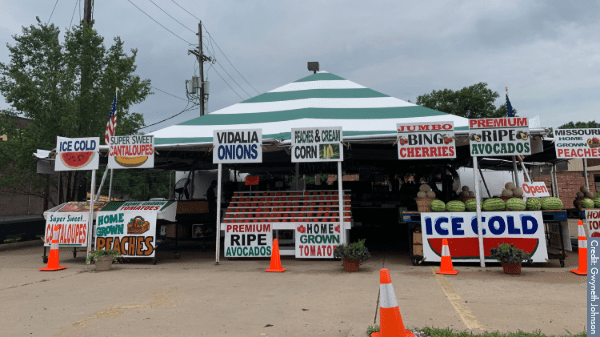When I started out in agricultural journalism, I was afraid of asking dumb questions. I was afraid that they would show up my (very real) lack of expertise.
After a few years, though, I started to realize something. The dumb questions were the ones that most needed to be asked.
I was put in mind of these thoughts by the talk about the supply chain, especially since the pandemic. Everybody is concerned with the supply chain, and, like the Devil in the Middle Ages, it is supposed to be responsible for all current misfortunes.
But just what exactly is the supply chain?


Writer Hugo Britt must have been having thoughts along these lines, because he has published a concise and useful definition of the supply chain and related terms on the Thomas Industry Insights website.
The article defines the supply chain as “a network of businesses and processes that contribute to the creation, distribution, and ultimately the sale of a product.”
This chain starts with the raw materials and ends with the product sold to the consumer.
For some products, the chain is a long one. What are the raw materials for a car? Plastic and steel. Ultimately the supply chain begins, then, with iron ore mining and petroleum.
With fresh fruits and vegetables, the chain is comparatively short. It starts in the field, proceeds to the distributor, shipper, and warehouser, and thence to the retailer or foodservice operator.
The shortest supply chain would be the farmers market, where the grower puts the product into a truck and sells it to the end user a few hours later.
Then there is downstream versus upstream. “Upstream” refers to all activities related to the supply. For a produce distributor, the trucks coming in to deliver fruits and vegetables from the field are “upstream.” The trucks going out to deliver the same fruits and vegetables to retailers are “downstream.”
Some industries also have returns: the product goes back to the producer if it doesn’t sell.
Returns are a big deal in book publishing, because booksellers are essentially selling on consignment: they buy the books but can send back the ones that don’t sell.
An author (speaking from experience) doesn’t really learn how well his book has sold until it’s been out for six months. Before then, a lot of copies may have gone out, but if they don’t sell, returns will be high—and the author doesn’t get royalties for copies that are returned.
Returns don’t really apply in the produce industry. A retailer is not going to send black bananas or mushy apples back to the distributor; the receiver will just throw them out.
The supply chain is also going to get more complicated. I was discussing this matter with my friend, longtime business journalist Quentin Hardy. His comments:
“Another dimension of this will be the influence of more tracking devices and large-scale, cloud-based data analysis programs in the virtual world, and the increase in pop-up warehouses in the physical world (largely in disused and repurposed retail outlets, and, who knows, unwanted suburban tracts). Instead of a series of hubs and spokes, it’ll be like a mess of connected webs. I’m not sure it’ll be better, but it’s probably coming.” (Quentin, who is currently at Google Cloud, notes these are personal opinions, not necessarily Google’s.)
Just when you thought you understood the supply chain . . .



